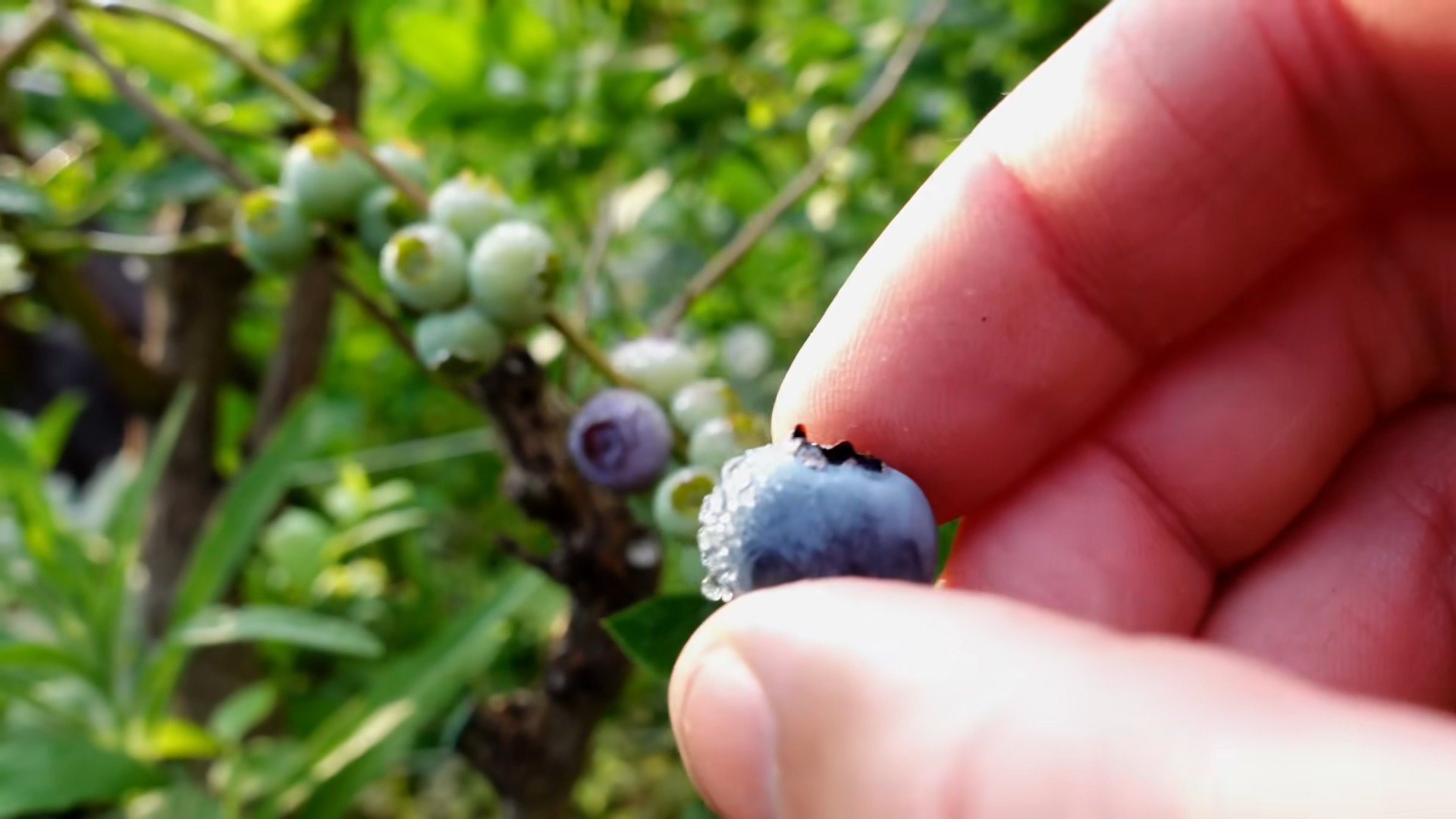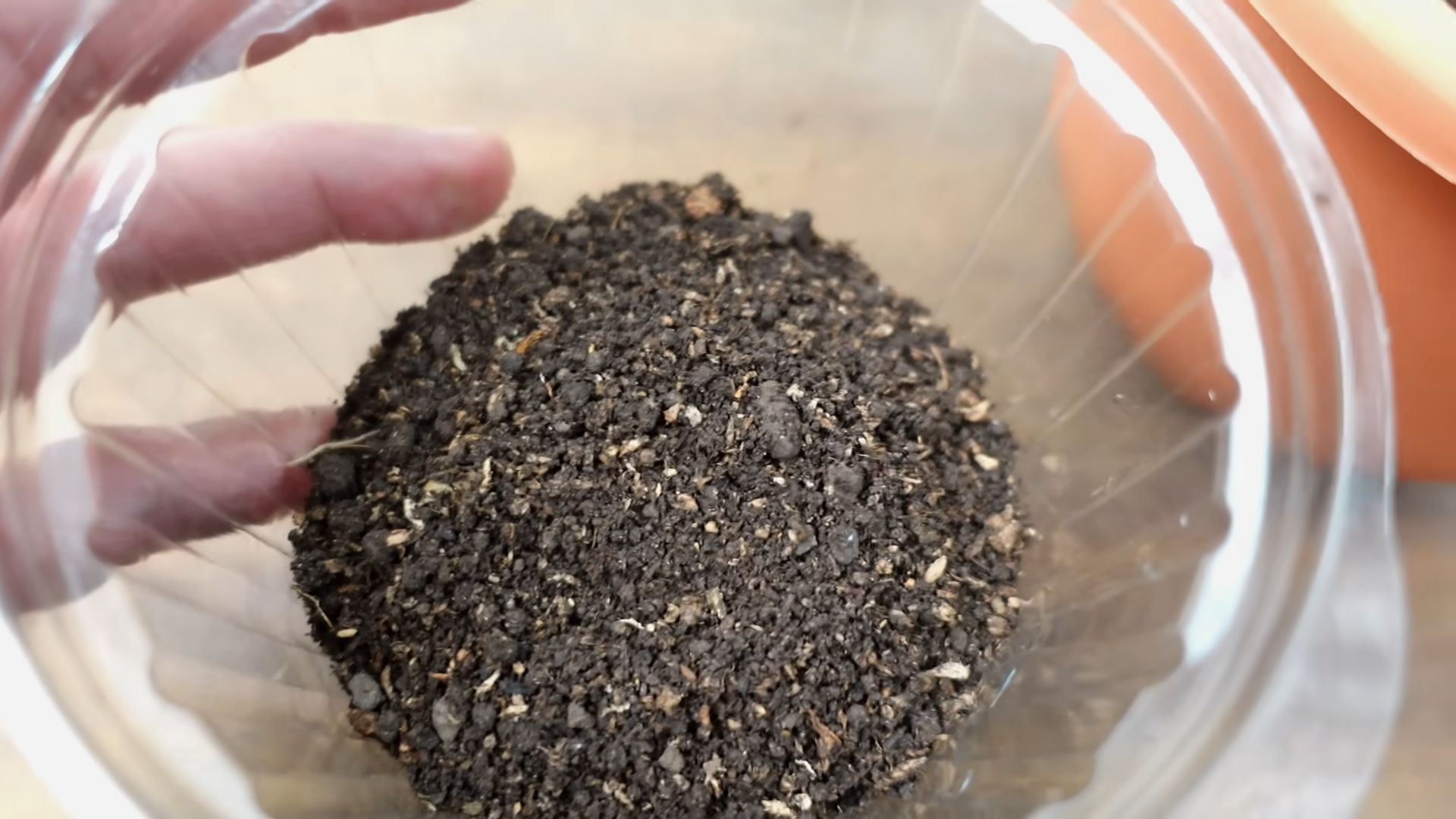Grow blueberries at home? Absolutely! Imagine stepping into your backyard and plucking juicy, sun-ripened blueberries straight from the bush. Sounds like a dream, right? Well, it doesn’t have to be! For centuries, cultivating blueberries has been a cherished tradition, from indigenous communities in North America who revered them as a gift from the Great Spirit, to modern gardeners seeking the unparalleled flavor and health benefits of these little blue dynamos.
But let’s be honest, the thought of growing your own blueberries can seem a little daunting. Where do you even start? What kind of soil do they need? How do you protect them from pests? That’s where this DIY guide comes in! I’m going to share some simple, yet effective, tricks and hacks that will empower you to grow blueberries at home, even if you have limited space or gardening experience.
In this article, I’ll walk you through everything you need to know, from selecting the right blueberry variety for your climate to creating the perfect acidic soil they crave. Plus, I’ll share some clever DIY solutions for pest control and fertilization that will save you money and keep your blueberries thriving. Get ready to transform your backyard into a blueberry paradise!

Growing Blueberries at Home: A Berry Good DIY Project!
Okay, so you want to grow blueberries at home? Awesome! I’m here to tell you it’s totally doable, even if you don’t have a sprawling farm. Blueberries are delicious, packed with antioxidants, and surprisingly rewarding to grow yourself. It takes a little planning and effort upfront, but trust me, the taste of those homegrown berries is worth every bit of it. Let’s dive in!
Choosing the Right Blueberry Variety
First things first, you can’t just grab any blueberry plant and expect it to thrive. You need to consider your climate and choose a variety that’s well-suited to your area.
* Highbush Blueberries: These are the most common type and are generally hardy in USDA zones 4-7. They produce large, delicious berries and are a great choice for many home gardeners. Within highbush, you’ll find Northern and Southern varieties. Northern highbush needs colder winters, while Southern highbush is better for warmer climates.
* Lowbush Blueberries: These are smaller, wild blueberries that are super cold-hardy (zones 3-7). They’re great for ground cover and produce smaller, intensely flavored berries.
* Rabbiteye Blueberries: These are best for warmer climates (zones 7-10) and are known for being drought-tolerant and productive. They require cross-pollination, so plant at least two different rabbiteye varieties.
* Half-High Blueberries: As the name suggests, these are a cross between highbush and lowbush, offering a good balance of size and cold hardiness (zones 3-7).
How to Figure Out Your USDA Zone: A quick Google search of “USDA plant hardiness zone map” will lead you to a map where you can enter your zip code and find your zone. This is crucial for selecting the right blueberry variety!
My Recommendation: If you’re a beginner, I’d suggest starting with a highbush variety that’s known for being relatively easy to grow in your zone. Check with your local nursery for recommendations – they’ll know what thrives in your area.
Preparing the Soil: Acidity is Key!
Blueberries are acid-loving plants, meaning they need a soil pH of 4.5 to 5.5 to thrive. Most garden soils are nowhere near that acidic, so you’ll need to amend the soil before planting. This is arguably the most important step!
* Soil Testing: Before you do anything, get your soil tested! You can buy a soil testing kit at most garden centers or send a sample to your local agricultural extension office. This will tell you your current pH and nutrient levels.
* Amending the Soil: Based on your soil test results, you’ll need to lower the pH. Here are a few ways to do that:
* Sulfur: This is a common and effective way to lower soil pH. Follow the instructions on the package carefully, as too much sulfur can be harmful.
* Peat Moss: Incorporating peat moss into the soil is another good way to increase acidity and improve drainage.
* Acidifying Fertilizer: Use a fertilizer specifically formulated for acid-loving plants, such as azaleas or rhododendrons.
* Drainage: Blueberries need well-drained soil. If your soil is heavy clay, amend it with plenty of organic matter, such as compost or shredded bark, to improve drainage.
* Sunlight: Blueberries need at least 6 hours of sunlight per day. Choose a location that gets plenty of sun.
My Experience: I made the mistake of not properly amending my soil the first time I tried growing blueberries. The plants struggled and didn’t produce many berries. Don’t skip this step!
Planting Your Blueberry Bushes
Now that you’ve chosen your variety and prepared the soil, it’s time to plant!
1. Timing: The best time to plant blueberries is in the early spring or late fall, when the plants are dormant.
2. Spacing: Space highbush blueberries about 4-5 feet apart, rabbiteye blueberries about 6-8 feet apart, and lowbush blueberries about 2-3 feet apart.
3. Digging the Hole: Dig a hole that’s twice as wide as the root ball and just as deep.
4. Removing the Plant from the Container: Gently remove the blueberry plant from its container. If the roots are circling the pot, loosen them up a bit before planting.
5. Planting: Place the plant in the hole, making sure the top of the root ball is level with the surrounding soil.
6. Backfilling: Backfill the hole with the amended soil, gently firming it around the plant.
7. Watering: Water the plant thoroughly after planting.
8. Mulching: Apply a 2-3 inch layer of mulch around the plant to help retain moisture, suppress weeds, and regulate soil temperature. Pine needles, wood chips, or shredded bark are good choices for mulch.
Pro Tip: When planting, consider creating a raised bed or mound, especially if your soil is poorly drained. This will help ensure that the roots don’t sit in water.
Caring for Your Blueberry Plants
Once your blueberry plants are in the ground, they’ll need regular care to thrive.
1. Watering: Blueberries need consistent moisture, especially during the growing season. Water deeply and regularly, especially during dry spells. Aim for about 1-2 inches of water per week.
2. Fertilizing: Fertilize your blueberry plants in the early spring with an acid-loving fertilizer. Follow the instructions on the package carefully. Avoid over-fertilizing, as this can damage the plants.
3. Pruning: Pruning is essential for maintaining the health and productivity of your blueberry plants. Prune in late winter or early spring, before new growth begins.
* Remove dead, damaged, or diseased branches.
* Thin out crowded branches to improve air circulation.
* Remove low-growing branches that touch the ground.
* For young plants, remove any flower buds in the first year or two to encourage vegetative growth.
4. Weed Control: Keep the area around your blueberry plants free of weeds. Weeds compete with the plants for water and nutrients.
5. Pest and Disease Control: Blueberries can be susceptible to certain pests and diseases. Monitor your plants regularly and take action if you notice any problems. Common pests include aphids, blueberry maggots, and Japanese beetles. Common diseases include blueberry leaf spot and mummy berry.
6. Protecting from Birds: Birds love blueberries just as much as we do! To protect your crop, you may need to cover your plants with netting.
My Biggest Challenge: Keeping the birds away! I tried everything from scarecrows to shiny ribbons, but the netting was the only thing that really worked.
Harvesting Your Blueberries
The moment you’ve been waiting for! Harvesting your own homegrown blueberries is incredibly satisfying.
1. Timing: Blueberries are typically ready to harvest in mid-summer. The exact timing will depend on the variety and your climate.
2. Ripeness: Blueberries are ripe when they are fully blue, plump, and easily detach from the stem.
3. Harvesting Technique: Gently roll the berries between your thumb and forefinger. If they are ripe, they should easily come off the stem.
4. Storage: Store freshly harvested blueberries in the refrigerator. They will keep for about a week.
Enjoying Your Harvest: Of course, you can eat your blueberries fresh, but they’re also great in pies, muffins, smoothies, and jams. I love freezing them for use in the winter.
Troubleshooting Common Blueberry Problems
Even with the best care, you may encounter some problems when growing blueberries. Here are a few common issues and how to address them:
* Yellowing Leaves: This is often a sign of nutrient deficiency or improper soil pH. Test your soil and amend it as needed.
* Poor Fruit Set: This can be caused by a lack of pollination, cold weather during bloom, or nutrient deficiencies. Make sure you have at least two different varieties for cross-pollination, protect your plants from frost, and fertilize properly.
* Small Berries: This can be caused by a lack of water, poor soil, or over-cropping. Water regularly, amend your soil, and prune your plants to thin out the fruit.
* Pest Infestations: Monitor your plants regularly and take action if you notice any pests. Use organic pest control methods whenever possible.
* Diseases: Prevent diseases by providing good air circulation, avoiding overhead watering, and removing any infected branches.
Don’t Give Up! Growing blueberries can be challenging, but it’s also incredibly rewarding. Don’t be discouraged

Conclusion
So, there you have it! Growing blueberries at home isn’t just a gardening project; it’s an investment in your health, your taste buds, and your overall well-being. Imagine stepping out into your backyard and plucking sun-ripened, juicy blueberries straight from the bush – a flavor explosion that store-bought berries simply can’t match. This DIY trick, while requiring a bit of patience and attention, is incredibly rewarding and far more accessible than you might think.
Why is this a must-try? Because you’re not just getting blueberries; you’re getting control. Control over the growing environment, ensuring your berries are free from unwanted pesticides and chemicals. Control over the variety, allowing you to choose the types that best suit your taste and climate. And control over the freshness, enjoying the peak flavor and nutritional benefits of freshly picked fruit.
Beyond the basic method outlined, there’s plenty of room for experimentation. Consider trying different blueberry varieties to find your favorites. Highbush blueberries are a popular choice for their large size and abundant yields, while rabbiteye blueberries are more tolerant of warmer climates. You could also explore companion planting, adding herbs like basil or thyme around your blueberry bushes to deter pests and enhance growth. Another variation is to experiment with different soil amendments to fine-tune the acidity levels, ensuring optimal growing conditions. For example, some gardeners swear by adding pine needles or oak leaves to the soil to increase acidity naturally.
Don’t be intimidated by the perceived complexity of growing your own fruit. This DIY trick is designed to be straightforward and achievable, even for beginner gardeners. The initial setup might require a bit of effort, but the long-term benefits – a continuous supply of delicious, healthy blueberries – are well worth it.
We wholeheartedly encourage you to give this DIY trick a try. Start small, perhaps with just one or two blueberry bushes, and gradually expand your blueberry patch as you gain experience. The satisfaction of harvesting your own homegrown blueberries is truly unparalleled.
And most importantly, we want to hear about your experiences! Share your successes, your challenges, and your tips with us in the comments below. Let’s create a community of blueberry enthusiasts, learning from each other and celebrating the joys of homegrown fruit. Let us know which variety you chose, what challenges you faced, and any unique solutions you discovered. Your insights could be invaluable to other aspiring blueberry growers. So, grab your gardening gloves, prepare your acidic soil, and embark on this exciting journey of growing blueberries at home. You won’t regret it!
Frequently Asked Questions (FAQ)
What type of soil is best for growing blueberries?
Blueberries thrive in acidic soil with a pH level between 4.5 and 5.5. Most garden soils are not naturally acidic enough, so you’ll need to amend the soil before planting. You can use sulfur, peat moss, or specialized acidifying fertilizers to lower the pH. Regularly testing the soil pH is crucial for maintaining optimal growing conditions. A soil testing kit can be purchased at most garden centers.
How much sunlight do blueberry bushes need?
Blueberries need at least six hours of direct sunlight per day to produce a good crop of fruit. Choose a planting location that receives full sun for most of the day. If you live in a particularly hot climate, some afternoon shade can be beneficial to prevent the bushes from overheating.
How often should I water my blueberry bushes?
Blueberries need consistent moisture, especially during the growing season. Water deeply and regularly, ensuring the soil stays moist but not waterlogged. A good rule of thumb is to water when the top inch of soil feels dry to the touch. Mulching around the base of the bushes can help retain moisture and suppress weeds.
What kind of fertilizer should I use for blueberries?
Use a fertilizer specifically formulated for acid-loving plants, such as azaleas or rhododendrons. These fertilizers contain ammonium sulfate, which helps to lower the soil pH. Fertilize in early spring before new growth begins and again in late spring after the first flush of growth. Avoid over-fertilizing, as this can damage the plants.
When is the best time to plant blueberry bushes?
The best time to plant blueberry bushes is in early spring or late fall when the plants are dormant. This gives them time to establish their roots before the heat of summer or the cold of winter. If you live in a region with mild winters, you can plant blueberries at any time of year, as long as the ground is not frozen.
How do I prune blueberry bushes?
Pruning is essential for maintaining the health and productivity of blueberry bushes. Prune in late winter or early spring before new growth begins. Remove any dead, damaged, or crossing branches. Also, prune out some of the older, less productive canes to encourage new growth. Aim to create an open, airy structure that allows sunlight to penetrate the center of the bush.
How long does it take for blueberry bushes to produce fruit?
Blueberry bushes typically start producing fruit within one to three years of planting. However, it may take several years for them to reach their full production potential. Be patient and continue to provide proper care, and you’ll be rewarded with abundant harvests for many years to come.
What are some common pests and diseases that affect blueberry bushes?
Common pests of blueberry bushes include aphids, spider mites, and blueberry maggots. Common diseases include fungal diseases like powdery mildew and botrytis blight. Monitor your plants regularly for signs of pests or diseases and take appropriate action if necessary. Organic pest control methods, such as insecticidal soap or neem oil, can be effective for controlling many pests.
Can I grow blueberries in containers?
Yes, you can grow blueberries in containers, especially if you have limited space or poor soil conditions. Choose a large container with good drainage and fill it with an acidic potting mix. Dwarf or semi-dwarf blueberry varieties are best suited for container growing. Be sure to water and fertilize regularly, as container-grown plants tend to dry out and deplete nutrients more quickly than those grown in the ground.
How do I protect my blueberries from birds?
Birds love blueberries just as much as we do, so it’s important to protect your crop from them. The most effective way to protect your blueberries is to cover the bushes with netting. You can also use bird scare devices, such as reflective tape or noisemakers, to deter birds.





Leave a Comment